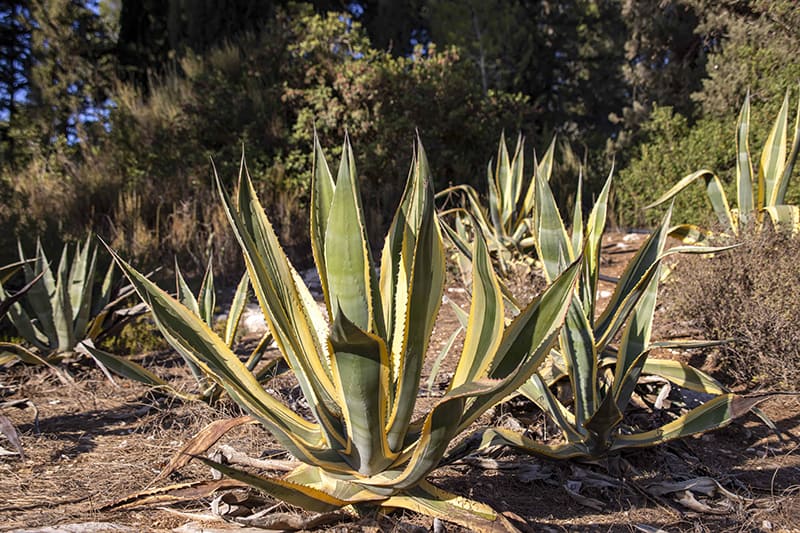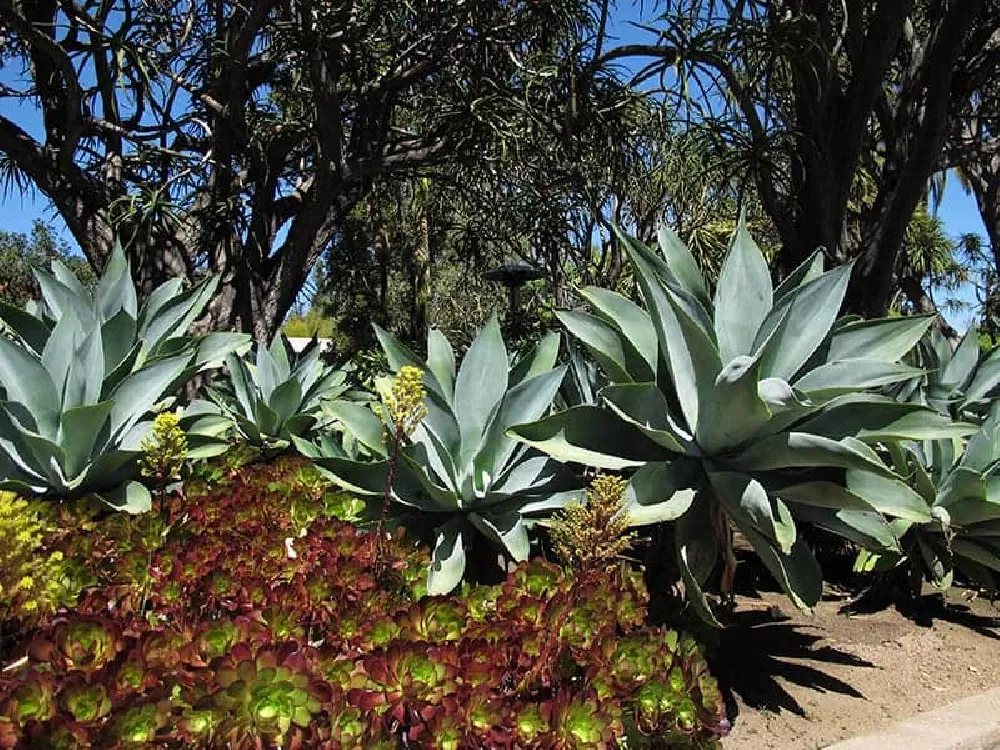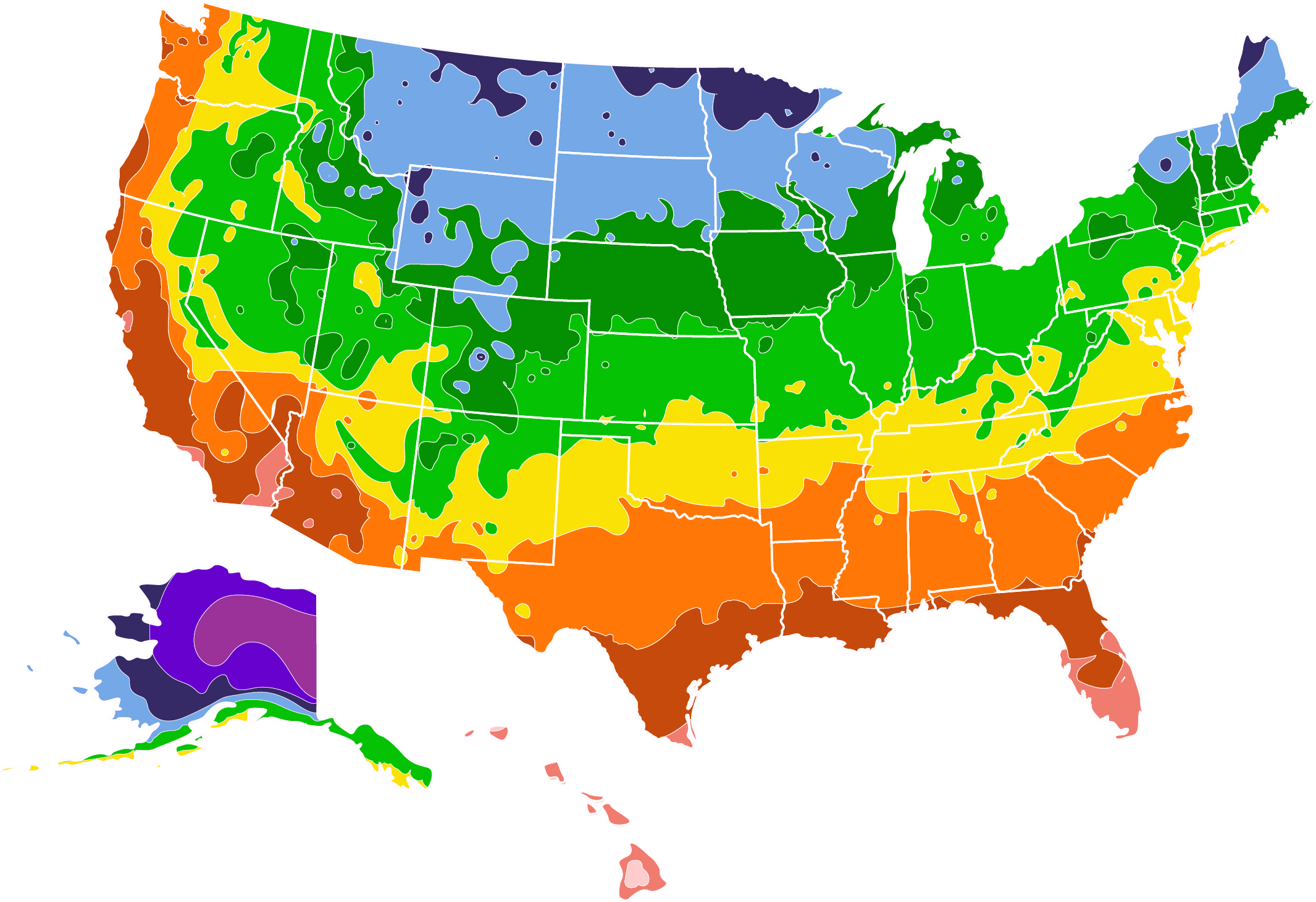- Home >
- Houseplants >
- Agave Attenuata
Agave Attenuata for Sale
Fast Growing Trees - 3 Gallon - Fox Tail Agave
Fast Growing Trees - 3 Gallon - Blue American Agave Plant
Fast Growing Trees - 3 Gallon - Twin Flower Agave Plant
Enter your zip code to find nearby stores that may carry this plant.
Agave attenuata is one of the easiest plants to grow as long as you provide it the right environment. When young, the evergreen plant grows in whorls of enormous, soft-textured silver-grey leaves, and as they grow older their stems can grow as high as four feet. After 10 to 20 years of maturity, each of these clusters produces a single “inflorescence” – a structure covered with small, tightly packed flowers — that resembles a fox tail and can grow to heights of 10 to 20 feet. Because of this unusual structure, the plant is also known as the fox tail agave, the swan’s neck and the lion’s tail. Here are some other interesting facts about agave attenuata
- Adds interest to landscaping beds, as well as in pots placed on patios and in rock gardens.
- Prefers full sun exposure, though it can thrive in shade also.
- Is easy to care for and is both drought tolerant and overwatering tolerant
Planting and Care
Planting instructions
Agave attenuata is most frequently planted in sunny gardens in subtropical areas where the temperatures hover around room temperature. The plant can tolerate heat and cold, but for the best results it should be planted in areas where temperatures do not run to either extreme and in light conditions ranging from full sun to partial shade. The plant is extremely tolerant of a wide range of soil types, as long as they drain well and are generally dry. The plant’s root structure is surprisingly shallow, so if you’re planting it in a container there is no need for depth. But the plant’s roots will quickly fill up the pot and the plant itself needs fresh soil every few years, so repotting will be necessary.
Watering and nutrients
Agave attenuata is a succulent that is unique in its ability to withstand both overwatering and underwatering. It thrives in sandy soil and should be allowed to dry out between waterings. Allow at least one week between deep soakings for plants in full sun. During cooler seasons the Agave attenuata requires even less water. Plants in containers will require watering more frequently.
During its active growing season during the summer, liquid fertilizer should be provided every two weeks.
Propagation
Propagating the Agave attenuata is most easily done by dividing off its offshoots, though the plant also throws off seed pods that can be planted. If you want to plant from its seeds, remove the pods during the spring or summer and let them dry out. They will germinate when placed in moistened potting soil.
Alternatively, you can remove the suckers that appear at the base of the plants and transplant them. To do this you need a sharp pair of shears or scissors and prepare a pot of soil or location in your garden where you plan on planting your new specimen. Cut the sucker away from the base of the parent plant, including a small section of the stem where it attaches. Allow several days for this cutting to air dry. Once a scab has formed over the cut area, place the cutting in a container of moistened soil or directly into the garden.
Pruning
Agave attenuata requires no pruning, though basal suckers and leaves can be removed to improve the appearance of the plant or to use for propagation.
Pests and diseases
There are a few diseases and pests that can impact your Agave attenuata. Young plants are vulnerable to snails and slugs, and the plant can also be attacked by soft plant scale and Agave snout weevils. Dry leaves with brown spots indicate an insect infestation. If your plant does not get enough sunlight it may be impacted by fungal diseases, root rot, or crown rot, which can spread from one plant to another, so if your plants show signs of infection they should be destroyed.
Light
The fox tail agave is a full sun plant and thrives in these conditions. It can acclimate to partial shade, especially if the shade is during the afternoon, as the plant can struggle with excessive heat and might appreciate some respite during the hottest part of the day.
If you have kept the plant in partial shade and wish to move it to a full sun position, then you should do so gradually, increasing the hours of direct sun it gets over the course of a few weeks. If suddenly moved into a different lighting position, the plant could go into shock and lose its leaves.
Temperature
Hailing from Mexico, the fox tail agave is accustomed to warm temperatures. It is hardy through USDA hardiness zones 10 to 12, where it can grow outside all year round. This plant can also be kept indoors as a houseplant and will be comfortable in average room temperatures. The fox tail agave is not frost-hardy and should not be allowed to remain outdoors year-round in areas that experience frost and freezing temperatures.
One option if you live outside of zones 10-12 is to keep your fox tail agave in a pot and move it outside during the warm summer months, and then transfer it inside or to a heated greenhouse to overwinter it. The plant can survive in temperatures as low as 28° F, but it will not tolerate such low temperatures for sustained periods of time.
Repotting
If you are growing your fox tail agave in a container, then it will need to be repotted around once every two years. This should be done in spring or early summer to minimize stress to the plant.
To repot the plant, select a new container just one or two inches larger in diameter than the current pot, and prepare the pot by filling the bottom with fresh soil. Ease the fox tail agave out of its pot by gently squeezing and turning it. Remove as much soil as you can from the root ball without disturbing the roots too much, then lower it into the new pot, filling around it with more new soil.
Ensure the plant sits at the same level in the new pot as it did in its previous pot, press the plant in, and water it generously. Fox tail agave plants have quite a shallow root structure, so they are well-suited to more shallow containers.
Agave Attenuata Varieties
Some other varieties of the fox tail agave include the following.
Agave attenuata ‘Variegata’

Agave attenuata ‘Nova’

Agave attenuata’ Ray of Light’
This agave has variegated leaves, which are gray-green in the center, and then fade out to a paler green before merging into creamy yellow on the leaf margins. Foliage develops from a chunky central stem, which typically grows to 4 or 5 feet in height.
FAQs
Can Agave attenuata be grown as an indoor plant in colder climates?
Agave attenuata can be grown indoors as long as it is placed in a sunny window where it can receive the light and warmth it needs. It is a particularly good choice because it does not have thorns, but indoor gardeners should make sure that it has room to grow. Gardeners can also move an Agave attenuata planted in a container indoors during the winter.
Is the Agave attenuata poisonous?
The sap of the Agave attenuata’s leaves is known to be a skin irritant, and though it is not toxic it will cause internal burns if ingested.











